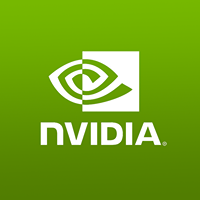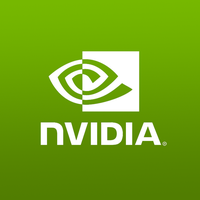The AI Revolution: Foxconn and ASUS Lead the Charge at GTC 2025
March 19, 2025, 5:09 pm
In the bustling heart of Silicon Valley, the NVIDIA GTC 2025 conference unfolded like a grand tapestry of innovation. Two titans of technology, Foxconn and ASUS, took center stage, showcasing their latest advancements in artificial intelligence (AI) infrastructure. Their presentations were not just displays of hardware; they were glimpses into the future of smart manufacturing, healthcare, and urban living.
Foxconn, the world's largest electronics manufacturer, unveiled its ambitious strides in humanoid robotics and AI factories. At Booth 323, the company showcased the next-generation GB300 NVL72 server rack, a marvel of engineering developed in collaboration with NVIDIA. This server is not just a piece of hardware; it’s the beating heart of the AI Factory, designed to handle the training and inference of trillion-parameter large language models (LLMs). Picture a factory where machines learn and adapt, much like a brain processing information. This is the vision Foxconn is bringing to life.
The GB300 NVL72 is powered by NVIDIA's Blackwell architecture, a cutting-edge technology that optimizes computing performance. Foxconn’s commitment to innovation is evident in its advanced cooling solutions, which utilize digital twin simulations to ensure efficient operations. Imagine a factory where every machine is not just a tool but a participant in a symphony of productivity. This is the essence of Foxconn's AI-driven approach.
Foxconn's Chairman, Young Liu, emphasized the company's role beyond mere manufacturing. Foxconn is not just a factory; it’s a catalyst for smart cities, smart manufacturing, and smart electric vehicles (EVs). The company’s Robotics Zone featured the Nurabot, a nursing collaborative robot designed to enhance patient care. This robot is set to debut in Taiwanese hospitals, embodying the fusion of technology and healthcare. It’s a reminder that AI is not just about efficiency; it’s about improving lives.
Meanwhile, ASUS made waves with its AI POD, powered by the NVIDIA GB300 NVL72 platform. This server is a powerhouse, equipped with 72 NVIDIA Blackwell Ultra GPUs and 36 Grace CPUs. It’s designed to tackle massive AI challenges, offering unprecedented processing capabilities. Imagine a data center where every computation is lightning-fast, where insights are gleaned in the blink of an eye. This is the promise of ASUS's latest offerings.
ASUS's commitment to AI infrastructure is underscored by its extensive range of servers, including the ASUS XA NB3I-E12 and the ESC8000 series. These servers are not just machines; they are the backbone of modern AI applications, supporting everything from video inference to agentic AI. ASUS is positioning itself as a leader in this space, ensuring that enterprises can harness the full potential of AI.
The collaboration between ASUS and NVIDIA is a match made in tech heaven. Together, they are driving the next wave of innovation in data centers. ASUS's servers, combined with NVIDIA's Blackwell Ultra platform, promise to accelerate training and inference, unlocking new possibilities in AI reasoning. It’s like having a supercharged engine that propels businesses into the future.
At GTC 2025, both companies highlighted the importance of digital twins in their operations. Foxconn’s digital twin of a busy hospital ward in Taiwan is a groundbreaking example of how technology can enhance healthcare. This virtual replica allows for real-time monitoring and optimization of medical workflows, ensuring that patient care is both efficient and effective. It’s a glimpse into a future where hospitals operate like well-oiled machines, with AI guiding every decision.
ASUS also showcased its commitment to edge AI with its PE2100N and PE8000G computers. These devices are designed for real-time perception AI, ideal for applications in autonomous vehicles and intelligent video analytics. They represent the shift towards decentralized AI, where processing happens closer to the source of data. Imagine a world where vehicles can think and react in real-time, enhancing safety and efficiency on the roads.
The excitement at GTC 2025 was palpable. Attendees flocked to the booths, eager to witness the future of technology. The atmosphere buzzed with the promise of AI transforming industries. Foxconn and ASUS are not just participants in this revolution; they are leaders, shaping the narrative of what’s possible.
As the conference wrapped up, one thing was clear: the future is bright. With companies like Foxconn and ASUS at the helm, the integration of AI into our daily lives is not just a dream; it’s an impending reality. The journey towards smarter cities, advanced healthcare, and efficient manufacturing is well underway.
In this new era, AI is more than just a tool; it’s a partner. It’s a force that will redefine how we live, work, and interact. The innovations showcased at GTC 2025 are just the beginning. As we look ahead, the potential for AI to enhance our world is limitless. The stage is set, and the revolution is just getting started.
Foxconn, the world's largest electronics manufacturer, unveiled its ambitious strides in humanoid robotics and AI factories. At Booth 323, the company showcased the next-generation GB300 NVL72 server rack, a marvel of engineering developed in collaboration with NVIDIA. This server is not just a piece of hardware; it’s the beating heart of the AI Factory, designed to handle the training and inference of trillion-parameter large language models (LLMs). Picture a factory where machines learn and adapt, much like a brain processing information. This is the vision Foxconn is bringing to life.
The GB300 NVL72 is powered by NVIDIA's Blackwell architecture, a cutting-edge technology that optimizes computing performance. Foxconn’s commitment to innovation is evident in its advanced cooling solutions, which utilize digital twin simulations to ensure efficient operations. Imagine a factory where every machine is not just a tool but a participant in a symphony of productivity. This is the essence of Foxconn's AI-driven approach.
Foxconn's Chairman, Young Liu, emphasized the company's role beyond mere manufacturing. Foxconn is not just a factory; it’s a catalyst for smart cities, smart manufacturing, and smart electric vehicles (EVs). The company’s Robotics Zone featured the Nurabot, a nursing collaborative robot designed to enhance patient care. This robot is set to debut in Taiwanese hospitals, embodying the fusion of technology and healthcare. It’s a reminder that AI is not just about efficiency; it’s about improving lives.
Meanwhile, ASUS made waves with its AI POD, powered by the NVIDIA GB300 NVL72 platform. This server is a powerhouse, equipped with 72 NVIDIA Blackwell Ultra GPUs and 36 Grace CPUs. It’s designed to tackle massive AI challenges, offering unprecedented processing capabilities. Imagine a data center where every computation is lightning-fast, where insights are gleaned in the blink of an eye. This is the promise of ASUS's latest offerings.
ASUS's commitment to AI infrastructure is underscored by its extensive range of servers, including the ASUS XA NB3I-E12 and the ESC8000 series. These servers are not just machines; they are the backbone of modern AI applications, supporting everything from video inference to agentic AI. ASUS is positioning itself as a leader in this space, ensuring that enterprises can harness the full potential of AI.
The collaboration between ASUS and NVIDIA is a match made in tech heaven. Together, they are driving the next wave of innovation in data centers. ASUS's servers, combined with NVIDIA's Blackwell Ultra platform, promise to accelerate training and inference, unlocking new possibilities in AI reasoning. It’s like having a supercharged engine that propels businesses into the future.
At GTC 2025, both companies highlighted the importance of digital twins in their operations. Foxconn’s digital twin of a busy hospital ward in Taiwan is a groundbreaking example of how technology can enhance healthcare. This virtual replica allows for real-time monitoring and optimization of medical workflows, ensuring that patient care is both efficient and effective. It’s a glimpse into a future where hospitals operate like well-oiled machines, with AI guiding every decision.
ASUS also showcased its commitment to edge AI with its PE2100N and PE8000G computers. These devices are designed for real-time perception AI, ideal for applications in autonomous vehicles and intelligent video analytics. They represent the shift towards decentralized AI, where processing happens closer to the source of data. Imagine a world where vehicles can think and react in real-time, enhancing safety and efficiency on the roads.
The excitement at GTC 2025 was palpable. Attendees flocked to the booths, eager to witness the future of technology. The atmosphere buzzed with the promise of AI transforming industries. Foxconn and ASUS are not just participants in this revolution; they are leaders, shaping the narrative of what’s possible.
As the conference wrapped up, one thing was clear: the future is bright. With companies like Foxconn and ASUS at the helm, the integration of AI into our daily lives is not just a dream; it’s an impending reality. The journey towards smarter cities, advanced healthcare, and efficient manufacturing is well underway.
In this new era, AI is more than just a tool; it’s a partner. It’s a force that will redefine how we live, work, and interact. The innovations showcased at GTC 2025 are just the beginning. As we look ahead, the potential for AI to enhance our world is limitless. The stage is set, and the revolution is just getting started.

